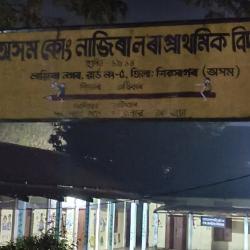Critical to the progress towards prosperity in NER is its liberation from economic imprisonment. This would require a qualitative change in the relationship of the country with the neighbouring countries contiguous to NER. There are considerable gains to be had by improving relations. In the case of Bangladesh, for example, there could be significant gains from transit fees and access to the markets in NER. This could contribute significantly to the reduction in Bangladesh’s trade deficit with India. Given that economic interests of NER are affected by the nature of relationship with these countries, it is important that the Foreign, Defence and Home Ministries have a consultation process with the States in NER to take account of their views.
Various political, economic and cultural factors have shaped the making of the Look East Policy for the north-east. To give effect to the policy, a large number of administrative measures have been taken in recent years to promote NER trade. The recommendations of various studies to develop infrastructure at Moreh and open up other trade points has also seen considerable progress. Yet, despite this so far the LE Policy has not delivered any concrete economic gains to the NER States. To look at the place of the LE Policy in the long-term calculus of the NER States it is important to understand some important principles governing trade between countries, the basic premise being that it is companies/individuals who conduct trade and not Governments. The most common form of trade between geographically contiguous areas is border trade, already taking place between the NER States and bordering countries and is in fact formalized in agricultural trade under the Indo-Myanmar trade agreement. Typically, border trade is (at an organized level) in commodities where transport costs are high in relation to the final price of the product (examples of such products are timber, cement, coal and other minerals). This trade would take place naturally and the State needs to only facilitate it administratively and via road and rail infrastructure.
However, for a majority of the items traded internationally, transport costs account for only about 5 per cent of the final price. In fact, estimates by UNCTAD (2005) show that in most cases trade barriers (formal and informal) are more restrictive for trade than transport costs. Hence, there is a limit to overland trade promotion via the NER States and it is not surprising that most Indo-Bangladesh trade is conducted via West Bengal given the insecurity of trading via the NER States (Chaudhari, 1995. A transport subsidy to NER States is unlikely to overcome this problem. In fact, troubled relations in Manipur has made even the relatively more developed Moreh trading post relatively redundant, to the extent that informal trade will need greater incentives to convert to legal trade and formal trade is unlikely to divert via Manipur in place of West Bengal. Coal/limestone trade has sustained the trade link between Meghalaya and Bangladesh, but it is debatable how long ‘rat-hole’ mining in Meghalaya will be sustainable given environmental concerns in NER in general. Promoting trade between the NER States and the neighbouring countries requires going beyond the calculations of ‘geographical contiguity’ and looking at those comodities in which the NER States have a comparative advantage in an economic sense. Here two main points need to be made. First, there are a few agricultural items in which the NER States have a comparative advantage vis-à-vis the rest of the country. The NER States can actively consider trading these items only when their own domestic surpluses become sufficient, and domestic surpluses are constrained by the lack of marketing due to uncoordinated production efforts of the individual States. This is particularly true in the case of fruits and vegetables. Second, it is debatable that NER trade with neighbouring countries is always more profitable (and hence more likely) than with the rest of India. Many growth centres like Kolkata, Delhi and Mumbai offer economically larger markets than those of Bangladesh and Myanmar. This is already showing up in the nascent floriculture industries of NER where exports are mainly to Guwahati, Kolkata and Delhi and even to Holland at the international level. This, however, does not mean that promoting trade with neighbouring countries is not important, but that the strategy should look beyond and create the infrastructure for trading with the rest of the country and internationally based on comparative advantages.
Third, the dynamics of trade in agricultural products is somewhat different from the dynamics of trade in industrial goods. Trade in agricultural items is generally of the inter-industry variety since product differentiation is not easy while trade in industrial goods admits of so-called ‘intra-industry’ trade. In agricultural items the excess demand in the NER States for items like meat, meat products and fish make them potentially important import items, so supplies from neighbouring States are likely to be cost-effective. However, this is largely ruled out by the restrictions on such trade, for example, in the Indo-Myanmar trade agreement. Further, the pattern of Indo-Myanmar and Indo-Bangladesh trade indicates that the demand of both Myanmar and Bangladesh is largely for industrial items such as processed foods and drinks (including animal foods), miscellaneous minerals and manufactured goods, textile fibers, textiles and clothing and machinery and transport equipment. While there is a good possibility for exports of agro-processing industries and floriculture-based industries, it is debatable that the best markets for these lie in the adjoining countries. Hence, the immediate need seems to be to promote trade in basic agricultural commodities (rice, fish, pulses etc.). Booming trade relations with China are reflected in the urgency to make free border-trade via the Nathu La a reality. The caveats offered earlier in the case of border trade apply with equal force here.
In summary, the kind of trade being promoted is important: whether it is border trade or ‘regular’ trade. In border trade, benefits would accrue to the NER States from storage, customs and tourism, which are typical for such ‘transit’ States. In addition, there are likely to be significant advantages of trade in agricultural items as these are normally perishable. However, for these benefits to accrue, the restrictions imposed on agricultural trade (a feature of all RTAs entered into by India) must be relaxed. In the context of border trade, in the longer term there are possibilities of increased trade in items like timber products, cement, steel and coal for which industrial capacities in NER will have to be built near the location of mineral resources.
In the case of ‘non-border trade’ items, the current State of industrial activity suggests that the maximum scope is for trade in agro-processing and floriculture. Perhaps the best way to promote trade under the LE Policy is to create the infrastructure and let the traders decide the direction of trade. Finally, in the context of the LE Policy, it is important to note that attempts to promote trade with neighbouring countries without promoting trade within the region are unlikely to succeed. Here the issue of intra-State road linkages is crucial.
Recommendations for the Look East Policy
- To immediately increase border trade in agriculture and some industrial goods it is necessary to remove current restrictions on border trade via Moreh, Nathu La and other entry points.
- Unrestricted trade with neighbouring countries in agricultural and meat products could lead to considerable reduction in the costs of these items in NER.
- The LE Policy has important security dimensions. There is urgent need to promote interaction with neighbouring countries through sports, music and other cultural activities.
- In the ca se of neighbouring countries which are members of WTO, formal request for trade facilitation would improve trade access for NER States.
- In the longer term, industrial output of NER should cater to the demand for industrial goods in the neighbouring countries. This is particularly important for border trade in items like cement, coal, timber and steel.
- To facilitate trade it is essential to activate existing land-customs stations (LCS) and to provide a secure transport corridor for traders.
- In the long run, NER needs to plug into the growing trade with ASEAN countries particularly in items like wood products, ores and rubber products.
- It is imperative to integrate IT facilities in promoting infrastructure for trade with the ASEAN countries.
- 12377 reads










Add new comment